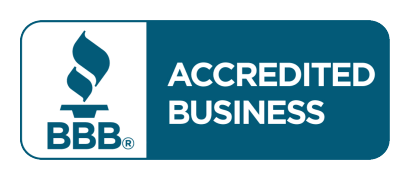
Practical Tips for Financing a Classic Car
Practical Tips for Financing a Classic Car
Financing a classic car can be an exciting but daunting task. Whether you’re a car enthusiast or simply appreciate the timeless beauty of vintage vehicles, owning a classic car can be a dream come true. However, it’s important to approach the financing process with caution and careful planning. Here are some practical tips to help you navigate the world of classic car loans and budgeting.
Understanding Loans and Payment Plans
When it comes to financing a classic car, there are several options available to you. Understanding these options and choosing the right one for your needs is crucial. Here are some common types of loans and payment plans to consider:
1. Traditional Auto Loans
Traditional auto loans are one of the most common ways to finance a classic car. These loans are typically offered by banks, credit unions, and online lenders. With a traditional auto loan, you borrow a specific amount of money and make monthly payments over a set period of time. It’s important to shop around and compare interest rates and terms from different lenders to ensure you’re getting the best deal.
2. Specialty Classic Car Loans
If you’re specifically looking to finance a classic car, you may want to consider specialty classic car loans. These loans are designed for vintage vehicles and often come with unique terms and conditions. Some lenders specialize in classic car financing and can offer more flexible repayment options, lower interest rates, and longer loan terms. However, it’s important to do your research and choose a reputable lender who understands the unique value and characteristics of classic cars.
3. Personal Loans
Another option to consider is a personal loan. Personal loans can be used for a variety of purposes, including financing a classic car. These loans are typically unsecured, meaning you don’t need to provide collateral. However, keep in mind that personal loans often come with higher interest rates compared to auto loans. It’s important to carefully consider the terms and repayment schedule before taking out a personal loan to finance your classic car.
How to Budget for Your Dream Car
Now that you have a better understanding of the financing options available, it’s time to create a budget for your dream car. Here are some steps to help you budget effectively:
1. Determine Your Budget
Start by evaluating your current financial situation and determining how much you can comfortably afford to spend on a classic car. Consider your income, expenses, and any existing debt obligations. It’s important to be realistic and ensure that the monthly payments for your classic car loan fit within your budget.
2. Research the Costs
Next, research the costs associated with owning a classic car. This includes not only the purchase price but also ongoing expenses such as insurance, maintenance, and storage. Classic cars often require specialized care and can be more expensive to maintain compared to modern vehicles. Take these costs into account when setting your budget.
3. Save for a Down Payment
Saving for a down payment can help reduce the amount you need to finance and lower your monthly payments. Aim to save at least 20% of the purchase price as a down payment. This will also demonstrate to lenders that you’re financially responsible and increase your chances of getting approved for a loan.
4. Explore Financing Options
Once you have a budget in place and have saved for a down payment, it’s time to explore financing options. Compare interest rates, loan terms, and repayment schedules from different lenders. Consider working with a lender who specializes in classic car financing and understands the unique needs of vintage vehicle owners.
5. Get Pre-Approved
Before you start shopping for your dream car, consider getting pre-approved for a loan. Pre-approval will give you a clear idea of how much you can borrow and help you negotiate with sellers. It also shows sellers that you’re a serious buyer and increases your chances of securing your dream car.
6. Consider Additional Costs
Finally, don’t forget to consider additional costs such as registration fees, taxes, and any modifications or upgrades you may want to make to your classic car. These costs can add up quickly, so it’s important to include them in your budget.
In Conclusion
Financing a classic car requires careful planning and budgeting. Understanding the different types of loans and payment plans available, as well as creating a realistic budget, will help you make informed decisions and ensure that owning your dream car doesn’t become a financial burden. Remember to shop around for the best financing options, save for a down payment, and consider all the costs associated with owning a classic car. With the right approach, you can turn your dream of owning a classic car into a reality.
Add a comment Cancel reply
Categories
- Automotive (8)
Recent Posts
Meet Our Team

Nathan has been guiding customers through the financial process with expertise and care, ensuring they drive away with their dream classic car. His dedication to customer service and in-depth knowledge of automotive financing options make him an invaluable asset to our team and your car buying experience.
Popular Tags
Related posts

The History and Development of American Muscle Cars


The Fascinating World of Classic Car Restoration


Essential Maintenance Tips for Classic Car Care







